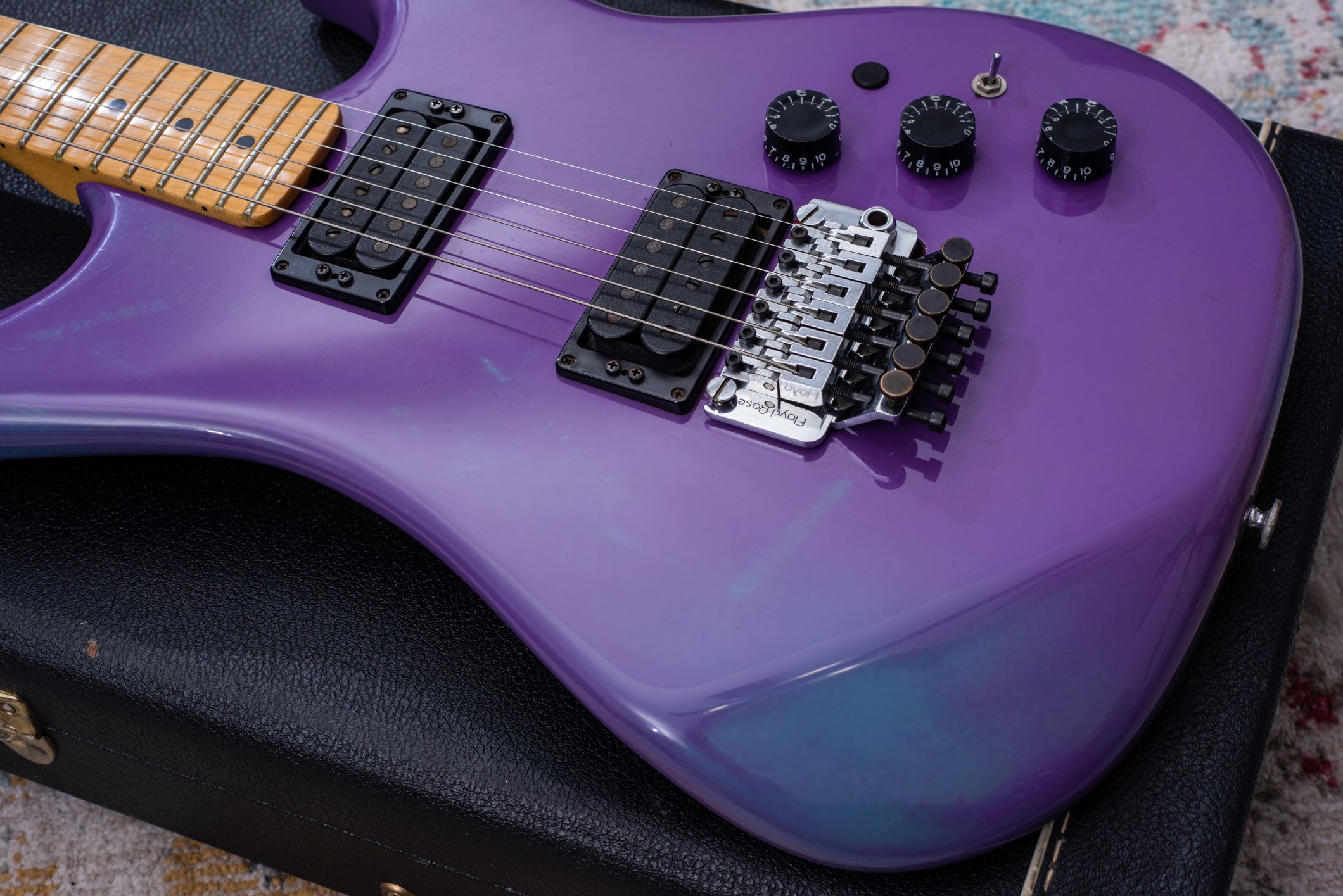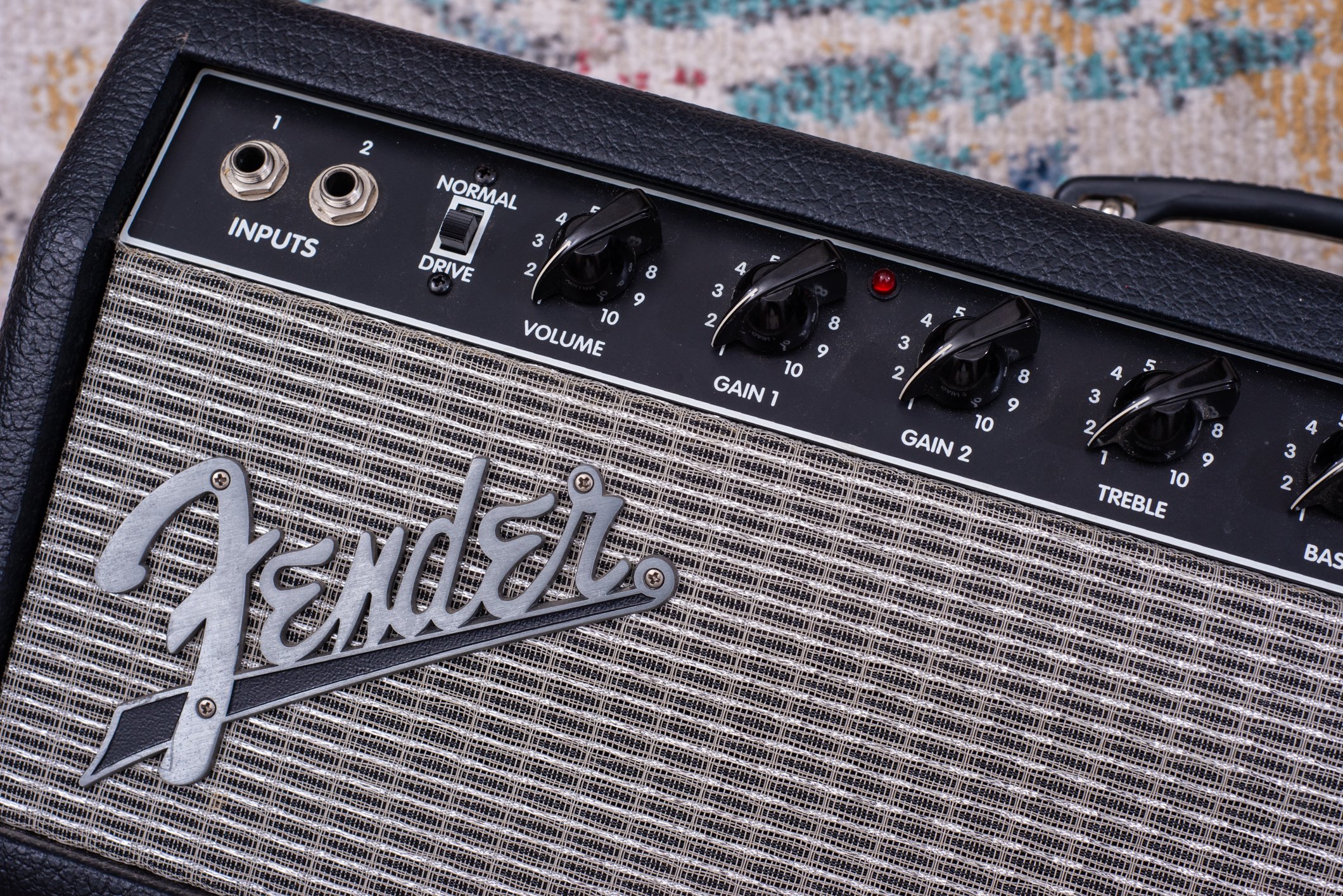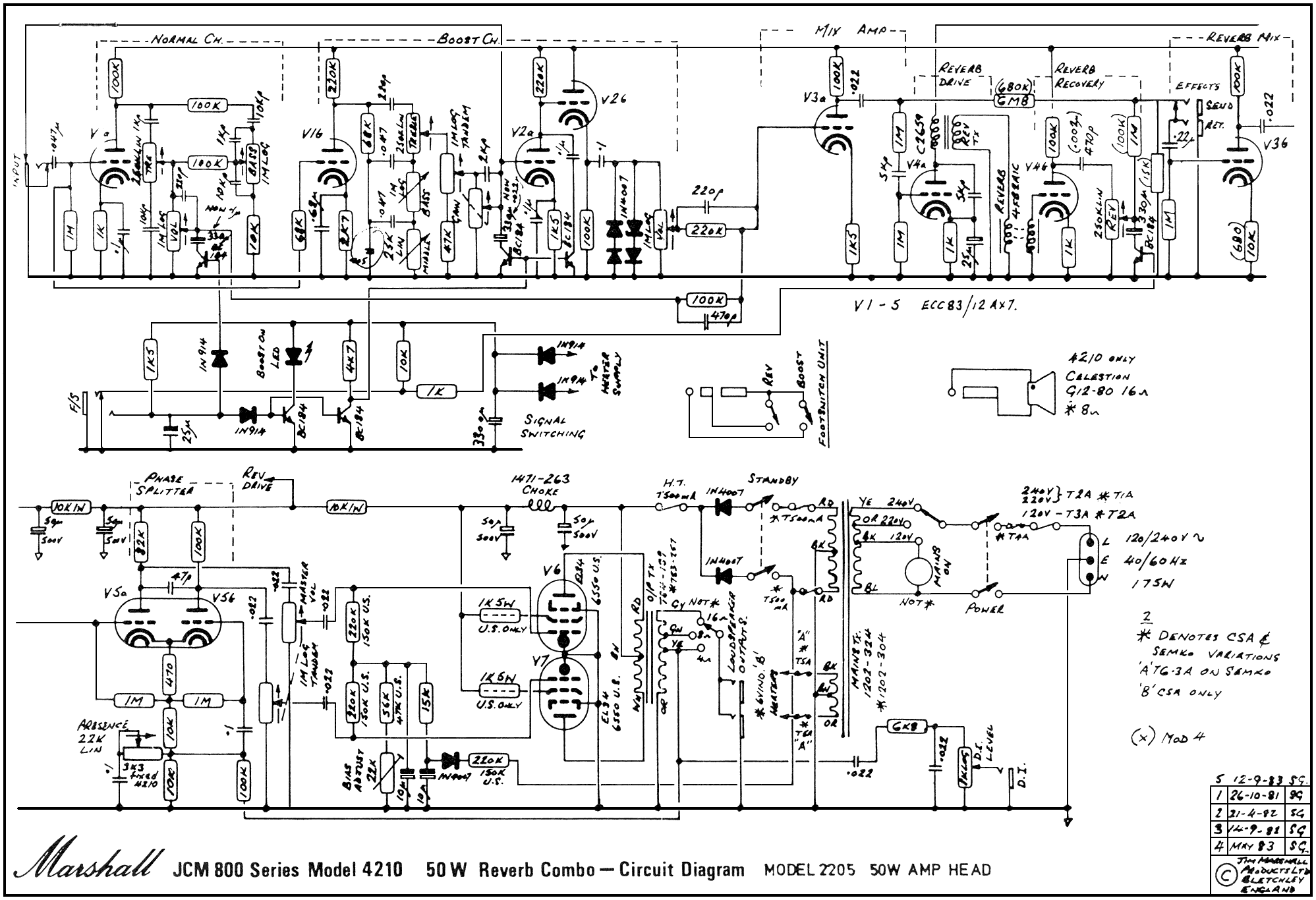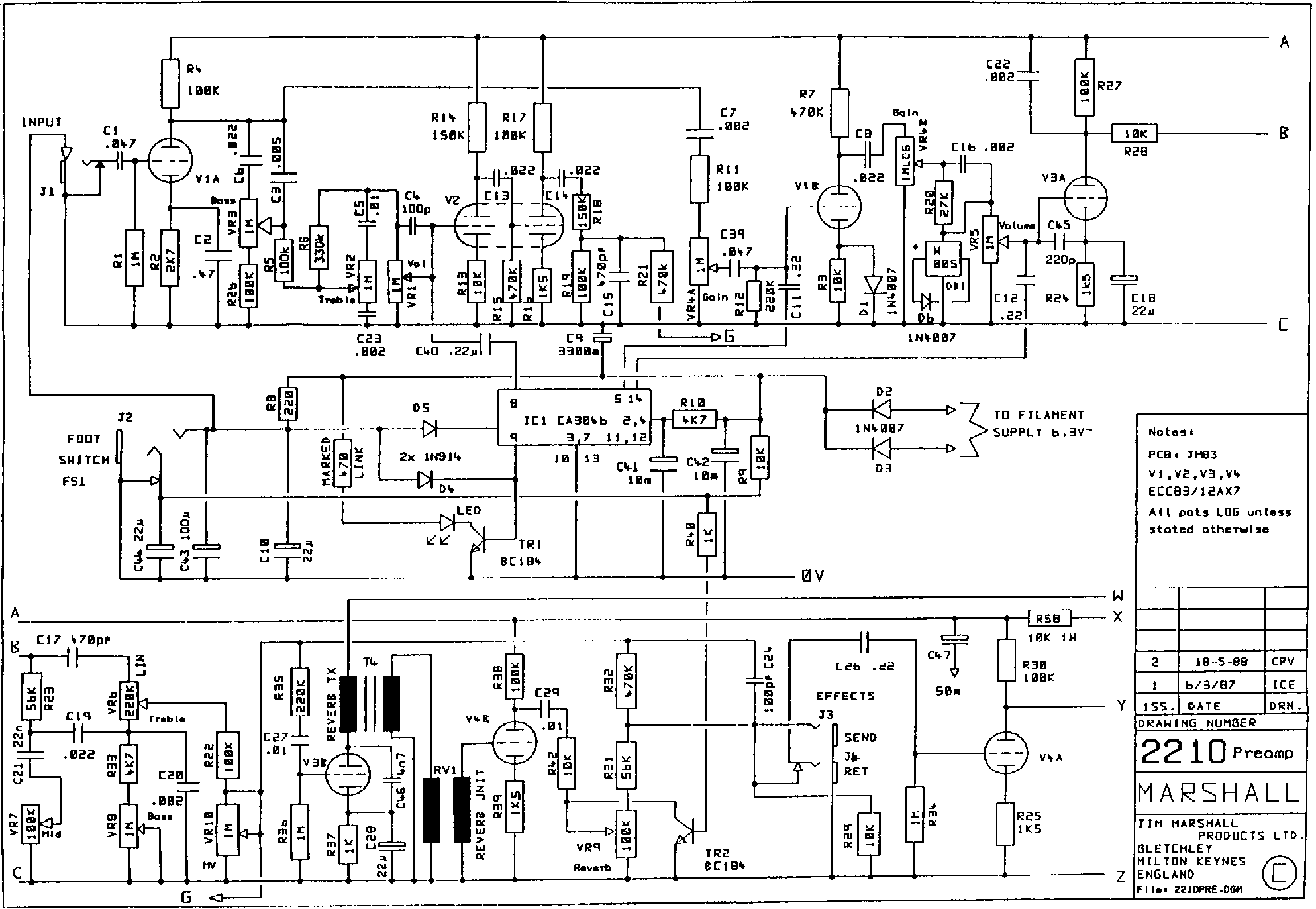I occasionally search for some of the older Peaveys hoping to get a good deal. Sadly I missed out on the days when VTM’s and 80s Butchers were $300 amps, and I still can’t seem to find an Ultra (teal stripe) for sale. Bravos and Triumphs are still pretty available though and those are great amps.
Anyway, I spotted this Butcher 2, with original footswitch and in mint condition. I remember when this amp came out, and at the time I was still playing my TSL most of the tone, so the idea of an amp with Clean + Crunch, but no Lead, just seemed like a straight downgrade. My view of amp tone was a lot simpler then…
So before pulling the trigger, I took another journey through past youtube demo videos - all of which seem absolutely terrible for this amp. Old marketing material barely seems to describe the amp beyond the catch-all terms like “versatile” and “brutal british tone.” At introduction in 2010, this amp was $1499 - at the time, this was a few hundred dollars more than a 6505, 6505+, or 6534+ (introduced alongside this Butcher). I can see why, if you wanted an EL34 flavored amp, and the 6534+ was introduced at the same time as a similar, 2-channel amp based on the provenance of the 5150/6505 series, you’d completely ignore the Butcher II - I know I did back then.
Taking a second look though, I was really missing you - we all were really. This is a USA made amp that is a nearly exact copy of two Marshall circuits, with a few mods that may as well be lifted straight from the Marshall or Metropoulos forums.
The clean channel is very close to the high treble channel of a 1987 or 1959 Marshall amp, with a 1n bright cap on the volume control (on this amp, the gain control for the clean channel). For reference, the 1987X uses a brighter 4n7 cap here, and the normal channel would just be the bright cap not there at all. The main change up from the Marshall is that in this case, the Gain control is located before the first gain stage, as opposed to a standard 1987/1959 where the gain (volume) control would be located between them. Two gain stages, cathode follower, and the tone stack also has the same values - mostly - except for a pair of 49k resistors in parallel with the mid pot - not sure what those do exactly so someone can fill me in there.
The crunch channel is our 2203/2204 copy, with 3 gain stages, including the exact same 10k cathode resistor on the second gain stage just like the Marshalls. The tone stack is identical on both channels of this amp - same slopes, pots, and cap values. What this ends up meaning is that you can jump from your “plexi” clean channel to your “800” crunch channel without any major upset in tone - it’s a smooth transition if you want it to be EQ’d that way. Great for classic rock.
Okay, so two amp clones packed into one, with a footswitch to go between them that’s great already. But remember there are some “mods” to talk about now!
Mod #1 Dual PPIMV’s, plus a standard MV on the clean/plexi channel: The most obvious addition, to me, is the addition of a pair of post phase inverter master volumes, that are also footswitchable. That alone is a huge plus - you can get your grind from the clean channel without needing the huge volumes a quad EL34 NMV amp would normally need to do that. The clean volume control is also a “mod” in a sense, it is a pre-PI master volume located after the tone stack - same place a stock one is located on a 2203, and the same place my personally modded 1987X has its master control. If you still want your NMV style goodness, simple turn the master and channel volume all the way up, and use the “gain” control to dial in your sound, just like you’d do on a real NMV Marshall. Of course I’m sure someone would complain if I didn’t mention that having those volumes in the signal path, even if fully opened, still places some load on the signal, and that turning down the PPIMV does not result in power tube overdrive - if you want those things, an attenuator or playing super loud are your only options. This amp provides an extremely usable compromise for most of us.
Mod #2 Punch Control: The next major mod is the “punch” control, which only works on the crunch (2203) channel. This punch control has 12 different settings, and the way it works is by changing the values of a cap and resistor on the cathode of the first gain stage. In short, selecting position “6” of the punch control (1 is all the way to the left, position 12 is all the way to the right), you have the stock value .68u of an unmodified Marshall 2203. Personally I’ve found this control to sound best in this “stock” position, but a notch or two left or right is really useful for fine tuning. I found it a bit too extreme at either end but that’s all personal preference, and admittedly with some different EQing, or a boost in front, that opens up a lot of options for this amp.
Mod #3 Built-in Boost: Both the clean and crunch channels have separate, footswitchable boosts. These are gain boosts - not volume. The crunch channel adds a switchable cap on the 2nd gain stage, which adds a lot of gain but does result in some looseness on the low end. The clean boost works in a similar way, but on the very first gain stage of that channel. I find these boosts to work really well in tandem with a bass-cutting tubescreamer type boost in front of the amp, but they are a little too muddy otherwise. That said, turning the punch control down and shaving some bass would probably tighten it up nicely, but you’d have a brighter rhythm/unboosted sound as a trade off. It’s not perfect but it’s definitely usable - this is the kind of thing that would just be hard wired on some boutique amp and no one would be any wiser, but this amp lets you have both your modded/boosted voice and the stock voice too.
Mod #4 Effects Loop: This is an easy one, but the amp has a series effects loop, which is tube buffered, and located after the EQ’s of each channel (including the channel volumes), but before the PPIMV’s. Technical details aside, this is a really effective way to set up a good loop and it sounds great so far with everything I’ve put through it, though I’m a relatively simple player when it comes to pedals.
Final Touches: I suppose these technically count as “mods” in some sense, but they are a little more “features” in a way. First is a half power switch, this is simply drops two power tubes from the circuit. The other is the “MSDI” function, which is a compensated line output using balanced XLR, taken off the speaker tap. It is simple but effective - it has a 3-way tone switch, a level control, and a very useful ground lift button.
I never thought I’d be writing so much about a relatively forgotten Peavey, but for the price and features it’s hard not to get excited about it. If I described an amp like this: “Authentic Marshall circuit clone, big transformers, switchable mods, simple controls, USA made” - you’d probably think I was talking about an expensive boutique amp, not an inexpensive Peavey. They aren’t very common, but if you happen to walk by one I’d highly encourage you to check it out, it’s a true sleeper hit.

























